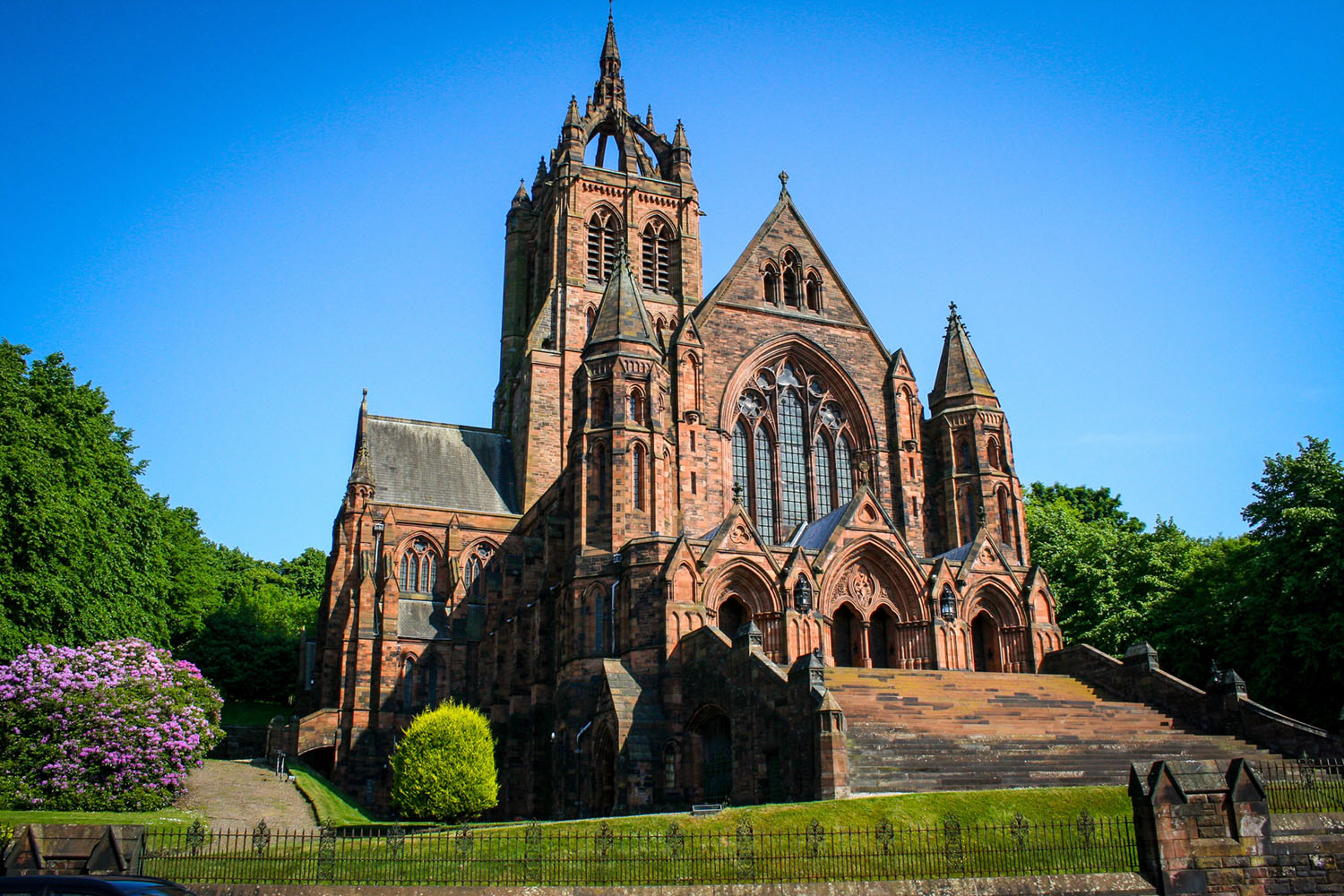
Thomas Coats Memorial Baptist Church
Allan Driver is an authority on the Thomas Coats Memorial Baptist Church, one of the most famous and cherished landmarks on the Paisley skyline. We spoke to him about the history and future of this magnificent piece of Gothic art.
One of Paisley’s most striking buildings, the Thomas Coats Memorial Baptist Church ceased to function as a place of worship in August of this year. A dwindling congregation meant that maintaining its role as a house of God was no longer tenable: another vanquished symbol of our increasingly secular society.
However, the end is not quite nigh for this category A listed building, which first opened its doors in 1894. The sad reality of its closure was alleviated by the news of plans to transform it into a state-of-the-art entertainment venue purpose-built for concerts and theatre productions, as well as opera and dance recitals.
This ambitious renovation has yet to be greenlit, but if it does go ahead it is expected to cost around £3million.
Some locals expressed concern about these plans. Was this beautiful building about to be sullied irrevocably? In an official report last year, architectural and property development company Framed Estates attempted to put their fears to rest.
They stated: “There can be few 19th century buildings more stimulating and exciting than the Thomas Coats Memorial Church, or none more worthy of sensitive restoration. The fabric of this A listed Gothic architecture edifice is, as much as practically possible, to remain untouched.”
- Ferguslie Thread Works – brought back to life in 3D
- Shaun Moore – Tannahill Makar and spoken word artist
- Renfrewshire Photos by West College Scotland students
Church trustee Allan Driver is a font of knowledge on the building’s history. Naturally, he has mixed feelings about the mooted restoration.
“Obviously we would prefer that the church remained a place of public worship,” he admits, “but that’s not a realistic prospect. One look at the building next door to it is a stark reminder of what can happen if a building is left to deteriorate, so the church being used, even in the form of an entertainment venue, is preferable.”
He quickly adds: “We’re not talking about a nightclub or anything like that, we’re talking about a cultural venue.”
What makes the Coats Memorial Church so special?
It’s almost like a work of art in its own right. What you see from the outside, the decorative stonework and the beautiful colour of the stone, even that doesn’t prepare you for the opulent inside. The carved marble, the alabaster, the decorative metalwork and so on, each aspect of that is a work of art.
The organ is a remarkable piece of equipment, isn’t it, both visually and sonically?
The organ is one of the most important instruments in the country. It’s a Hill organ, and Hill was the maker in his heyday. It’s essentially in its original sound condition, it’s not been modified. Yes, the linkage between the console and the pipes has been modified, but the actual sound of the instrument is exactly as it would’ve sounded when the church opened in 1894. Very few instruments of that age have survived without major alterations to their sound quality.
How does Coats differ from other Baptist churches?
There will not be another Baptist church that sports the kind of decoration and ornamentation that Coats has. In terms of its scale and its level of decoration, it is unlike any other Baptist church that I know. There may be Baptist churches in America that can rival it for scale, but nothing in terms of its decoration. Baptist churches by their nature tend to be plain, simple, undemonstrative buildings. In a sense, the kind of Calvinistic approach to religion is reflected in the surroundings, but the Coats church is not any of those things, it’s the very opposite in fact.
Why is that?
The original congregation, which was established in 1795, they worshipped in a little building in Storie Street. They were a very liberal and tolerant congregation, they weren’t Calvinistic in their outlook whatsoever. Indeed, the Coats congregation has always been regarded as very open in its philosophy.
“It was built by the people who put Paisley on the map, In that sense it’s a major part of Paisley’s heritage”
The church was named in honour of Thomas Coats, a successful threads manufacturer, devout Baptist and philanthropist. What can you tell us about him?
His father set up Paisley’s first little thread-spinning shop in his back yard. Later on, Thomas was one of the major driving forces in the mechanisation and industrialisation of the whole thread-spinning process. He was an important figure. The whole Coats family were essentially very philanthropic, and Thomas was very concerned about the welfare of the people of Paisley. Not just his own workforce and not just Baptist congregations, because he donated money to a whole variety of different denominations. They also supported schools, hospitals and museums, and obviously the Coats Observatory.
Given his support for the people of Paisley, do you think that Thomas Coats would be philosophical regarding the transformation of his church into a cultural hub?
Yes, as it was always intended for culture as well as a place of public worship. The notion that concerts would be held there, obviously of acceptable musical formats, that was something they envisaged.
The church means a lot to Paisley, doesn’t it?
Its position on the High Street puts it at the heart of Paisley, and it was built by the people who put Paisley on the map. In that sense it’s a major part of Paisley’s heritage.
The church has been rebranded as Coats Paisley, a wedding and events venue. For more information visit the website.
